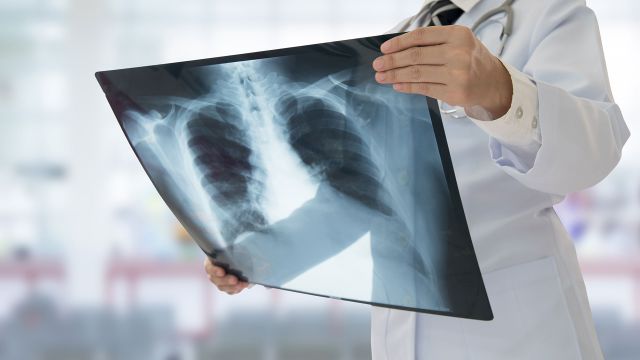When your healthcare provider diagnoses you with non-small cell lung cancer, he or she then needs to determine the stage of the cancer. For patients, the numbers and letters that describe cancer may sound confusing and possibly frightening. Below is a simple overview of what cancer staging means and how it works. If you have questions about your diagnosis, it is important to speak with your healthcare provider about your questions and concerns.
What is cancer staging?
Staging describes how advanced a cancer is and whether it has spread beyond the initial tumor site. This helps your healthcare provider plan your treatment and identify potential clinical trials you might be eligible for. Staging also helps healthcare providers communicate with each other by providing a common language for discussing cancer.
Common staging conventions
Healthcare providers generally use the TNM system for staging non-small cell lung cancer. TNM describes the size and extent of the tumor (T), whether it's also present in regional (nearby) lymph nodes (N) and whether the cancer has metastasized (M) or spread.
Your healthcare provider determines the stage of the cancer using the information gathered during physical exams. Imaging tests, blood tests, biopsies and pathology reports all provide a piece of the puzzle. This is called clinical staging.
Some patients undergo surgery, either to remove cancer and/or nearby lymph nodes, to see how much cancer is in their body, or to obtain a biopsy sample. The information gathered during surgery may be used to determine pathological staging, which is sometimes different than clinical staging.
TNM calculated by clinical staging is designated with a lowercase “c” while TNM calculated by pathological staging is designated with a lowercase “p.”
Using the TNM data and other factors, your healthcare provider will assign the cancer a staging number between 0 and IV.
- Stage 0 refers to very small tumors that are not in the deep tissues of the lungs or in any other parts of the body.
- Stage I is a small tumor that is limited to the lung where it started and has not spread to lymph nodes inside the lung.
- Stage II cancers are larger in size and may have spread to nearby lymph nodes inside the lung or into the chest wall.
- Stage III is when the lung cancer has spread to lymph nodes and surrounding structures of the body.
- Stage IV is when the lung cancer has metastasized and spread to other parts of the body.
Details on the cancer are included with the TNM stage number. For example, non-small cell lung cancer staged at IIIA T3 N0 M0 is larger than 5 cm but smaller than 7 cm or has grown into the chest or has two distinct tumor nodules, but has not spread to lymph nodes or metastasized
The stage of cancer does not change even if the cancer progresses; it's based on the stage at time of diagnosis.
Other ways to classify cancer
Tumor grade classifies cancer cells based on how abnormal they look under a microscope and how quickly they are likely to grow. Physicians assign tumor grade values based on the type of cancer. Grades progress from grade 1, least aggressive and slow growing, to grade 4, fast growing and aggressive.
Medically reviewed in February 2020.





